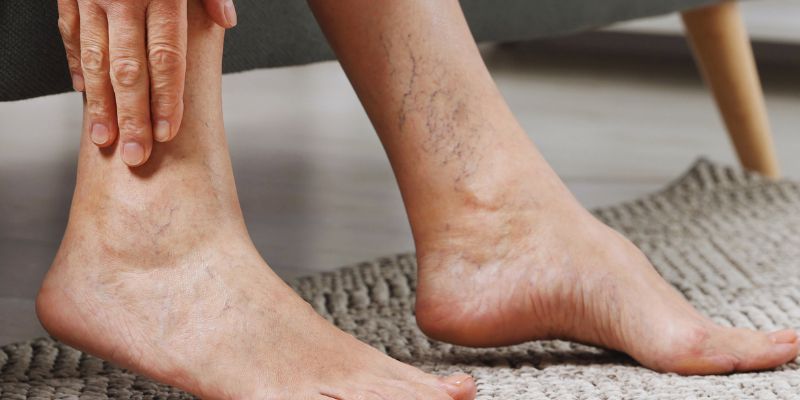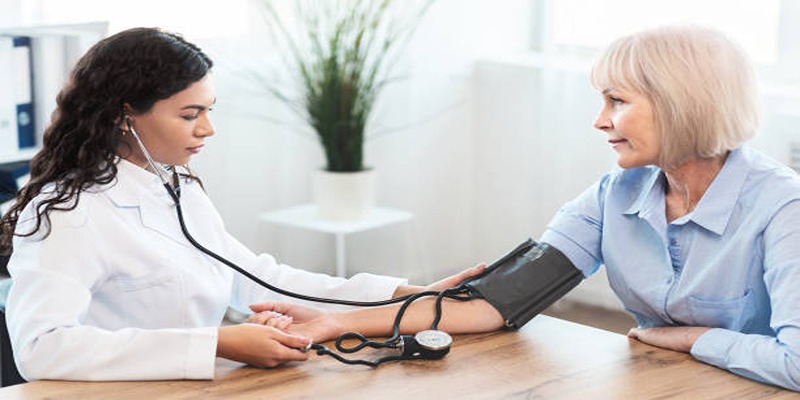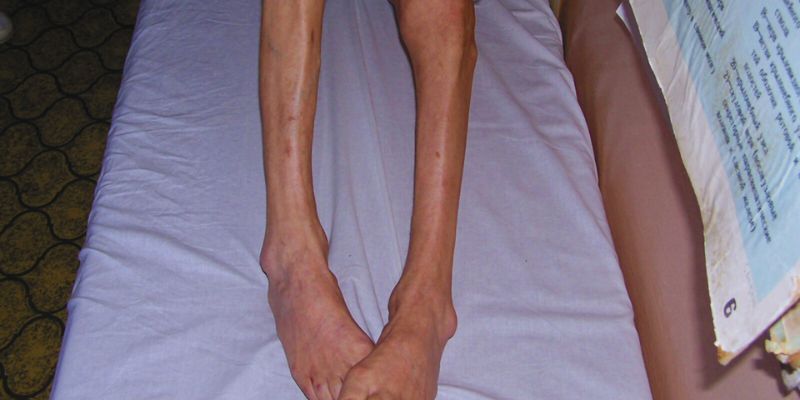Top Warning Signs of Venous Insufficiency You Should Never Ignore
Advertisement
Venous insufficiency results from the legs' struggling to return blood to the heart. Pooling of blood resulting from this causes discomfort and long-term health problems. Many people neglect early signs, which causes the disorder to get worse with time. Early recognition of the symptoms will assist in avoiding major problems, including blood clots or ulcers. Typical warning indicators are edema, varicose veins, leg discomfort, and skin discoloration.
Untreated, these symptoms sometimes worsen. Early diagnosis and therapy help to increase circulation and avoid problems. If you have ongoing leg pain, you really should consult a doctor. Management of venous insufficiency is easier the sooner it is treated. This article discusses the most often occurring warning signals and why they should never be overlooked. Understanding these symptoms will help you to prevent long-term harm and safeguard your vascular health by acting early.

Top Warning Signs Of Venous Insufficiency
Below are the top warning signs of Venous Insufficiency
Swelling in the Legs and Ankles
One of the first indicators of venous insufficiency is swelling in the ankles and legs. Fluid accumulates in the lower legs when the veins cannot effectively return blood to the heart. This disorder, edema, is often more obvious at the end of the day or following extended periods of sitting or standing. At first, the swelling could be minor, but it might get severe with time. Pushing on the swollen area sometimes results in a transient indentation called pitting edema. Usually paired with swelling, the legs have a strong, tight sensation. Many folks also feel uncomfortable, which makes moving around challenging. Though they are temporary fixes, elevating the legs and compression stockings assist in lowering swelling. If swelling continues, it can point to increasing venous insufficiency.
Varicose Veins
Usually showing as bulging, twisted veins under the skin, varicose veins indicate venous insufficiency. Usually developing in the legs, they are brought on by venous pressure. As the valves inside these veins deteriorate, blood pools instead of flowing effectively to the heart, enlarging these veins. Although varicose veins can be aesthetically unpleasant, they can also be uncomfortable. Typical complaints are burning around the impacted veins, aching, and itching. Some persons, particularly following extended standing or sitting, feel throbbing agony. Untreated varicose veins over time could cause more major problems, such as blood clots or skin ulcers. Regular exercise and limiting extended periods of immobility are lifestyle adjustments that assist in the control of symptoms. For extreme cases, though, medical treatments—including vein stripping or laser therapy—may be required. Early management enhances circulation and helps to avoid more problems.
Aching, Throbbing, or Heaviness in the Legs
One common indication of venous insufficiency in the legs is an ongoing aching or throbbing sensation. This soreness usually worsens during the day, Particularly if you spend long hours standing or sitting. Many people define the sensation as leg heaviness or tiredness, which makes daily tasks more difficult. Bad circulation causes this discomfort, which results in vein accumulations of blood. The blood stays still longer, and the more uncomfortable it causes. Some people find temporary relief by elevating their legs or donning compression stockings. Should the pain persist, though, it may indicate declining vein function. Ignoring leg aches could cause major problems such as venous ulcers or deep vein thrombosis (DVT). Proper diagnosis and therapy depend on seeking medical guidance. Early venous insufficiency root cause will enhance general leg health and help lower pain.
Skin Changes and Discoloration
Another alert indication of venous insufficiency is skin darkening. Bad circulation causes obvious changes in the texture and color of the skin as the disorder advances. The skin surrounding the afflicted veins could deepen and turn reddish-brown or purple. Red blood cells breaking down and leaking into nearby tissues causes this. Apart from discoloration, the skin could develop a dry, itchy, or irritated condition. On their lower legs, some people get scaly patches or rashes. More advanced cases might cause the skin to get delicate and prone to venous ulcers—open sores. If left untreated, these slow-healing ulcers could cause infections. Good skincare and medical therapies, like compression therapy, help control symptoms. See a doctor right away if you find ongoing changes in your skin. Early intervention helps to stop more damage and lower the long-term complication risk.

Restless Leg Syndrome
Restless leg syndrome is a neurological disease causing an irresistible need to move the legs. It is usually connected with venous insufficiency brought on by inadequate circulation. Particularly at night, those with RLS often report sensations of tingling, crawling, or burning in their legs. This soreness can make it challenging to stay or fall asleep. Venous insufficiency and RLS are partly linked by insufficient lower leg blood flow. Compromise of circulation may also impact nerve function, which causes unpleasant sensations. Symptoms can be lessened by regular exercise, leg massaging, and stretching. If RLS is chronic, a medical assessment is required to ascertain whether venous insufficiency is the underlying reason. Correcting venous insufficiency will help to reduce RLS symptoms and increase general leg comfort. Addressing poor circulation will help avoid more issues and improve sleep quality early on.
Frequent Leg Cramps
Especially at night, leg cramps can point to venous insufficiency. Bad circulation causes the muscles to spasm reflexively, leading to these terrible cramps. Cramps are caused when veins fight to get blood back to the heart, reducing oxygen availability to the muscles. Many people have acute, brief discomfort lasting a few seconds to several minutes. After the cramp goes away, the impacted muscle could still hurt for hours. Regular leg cramps can interfere with everyday activities and sleep; hence, it is crucial to solve the fundamental cause. Staying hydrated, stretching, and donning compression stockings will help lower leg cramp frequency. Still, regular cramps accompanied by additional venous insufficiency symptoms call for medical treatment. Untreated, the disorder may develop into more major problems such as chronic venous ulcers or deep vein thrombosis. Early therapy can boost circulation and stop long-term harm.
Conclusion:
Maintaining good circulation depends on an awareness of the warning signals of venous insufficiency. Never overlook symptoms, including edema, varicose veins, leg pain, and skin discoloration. Early action can help to avoid problems, including blood clots and ulcers. See a doctor right away if you suffer ongoing pain. Medical procedures, compression therapy, and lifestyle adjustments are available treatments. Early address of venous insufficiency enhances general well-being and leg condition. Don't wait for symptoms to worsen; intervene early to preserve your vascular integrity. Knowing the warning signals will help you to get early treatment and avoid major problems.
Advertisement












